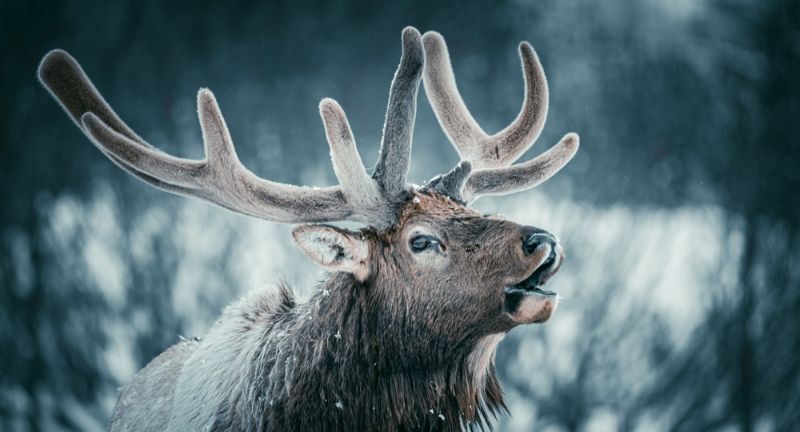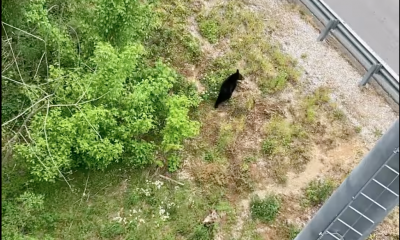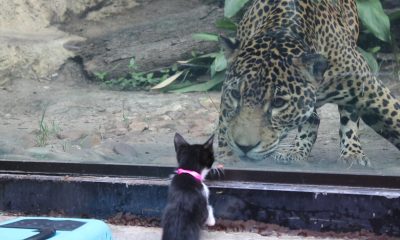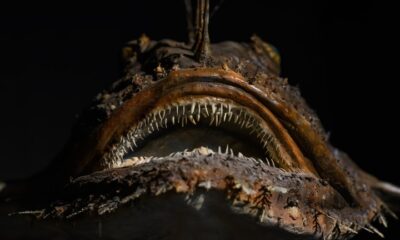ANIMALS
18 Cool Facts About Reindeer That Go Beyond Santa’s Sleigh!
Published
2 months agoon

Shutterstock
Reindeer are some of the most fascinating creatures in the animal kingdom, blending myth and reality with their unique characteristics. Known for their association with Christmas folklore, these majestic animals also possess remarkable adaptations for surviving in harsh Arctic climates. From their ability to see ultraviolet light to their hollow, buoyant fur, reindeer are masters of their environment. Beyond their natural traits, they hold significant cultural importance for Indigenous Arctic communities. This article explores 18 incredible facts about reindeer, revealing the secrets behind their resilience, beauty, and enduring charm.
Reindeer and Caribou

Shutterstock
Reindeer and caribou are two names for the same species, but their use depends on the region. In North America, “caribou” typically refers to the wild population, while “reindeer” often describes domesticated herds. This distinction highlights their adaptability as both wild and semi-domesticated animals. Regardless of their name, these creatures are vital to the ecosystems and cultures of the Arctic.
Gender Equality in Antlers

Shutterstock
Reindeer are unique among deer species because both males and females grow antlers. Male reindeer shed their antlers after the mating season, while females keep theirs throughout the winter. This means that the antlered reindeer often depicted pulling Santa’s sleigh are likely female. This adaptation helps females protect food sources in the snowy months.
Snow Shoe Adaptation

Shutterstock
Reindeer hooves are perfectly adapted to changing seasons and environments. In summer, their hooves are spongy and provide traction on wet and muddy terrain. During winter, they harden and sharpen to help reindeer dig through snow to find food. These versatile hooves make reindeer exceptional travelers in the Arctic wilderness.
UV Vision

Shutterstock
Reindeer have a remarkable ability to see ultraviolet light, which sets them apart from most mammals. This adaptation is crucial in the Arctic, where UV vision helps them spot predators against the bright white snow. It also aids in locating food, such as lichen, which absorbs UV light and stands out in the landscape. Their UV vision showcases how reindeer are uniquely equipped for survival in extreme conditions.
Arctic Masters

Shutterstock
Reindeer thrive in temperatures that can plummet to a bone-chilling -50°F (-45°C). Their thick fur, which traps air for insulation, is key to their survival in such frigid conditions. Additionally, their nasal passages warm cold air before it reaches their lungs, preventing heat loss. These adaptations make reindeer true masters of the Arctic.
Migratory Champions

Shutterstock
Reindeer are known for their epic migrations, some of the longest among land animals. They can travel up to 3,000 miles annually in search of food and optimal living conditions. These migrations often involve crossing challenging terrain and even icy rivers. Their incredible endurance and navigational skills highlight their adaptability to changing environments.
A Nose for Warmth

Shutterstock
Reindeer are famously associated with their “red noses,” but there’s science behind it. Their noses have a dense network of blood vessels that help warm the freezing Arctic air before it enters their lungs. This adaptation is critical for conserving body heat in extreme cold. It’s not just folklore—reindeer noses are perfectly engineered for life in the Arctic.
Cultural Importance

Shutterstock
Reindeer are deeply woven into the cultural fabric of Arctic Indigenous peoples, such as the Sami and Nenets. These communities rely on reindeer for transportation, food, clothing, and even shelter. The symbiotic relationship has existed for centuries, highlighting the reindeer’s significance beyond ecological contributions. Their cultural importance ensures they remain an integral part of human survival in the Arctic.
The Santa Connection

Shutterstock
Reindeer owe much of their global fame to their association with Santa Claus. The 1823 poem *A Visit from St. Nicholas* introduced reindeer as Santa’s magical sleigh pullers, complete with names like Dasher and Dancer. Later, Rudolph the Red-Nosed Reindeer became a beloved holiday icon. This festive connection has made reindeer a symbol of Christmas cheer worldwide.
Calorie-Conscious Diet

Shutterstock
During winter, reindeer rely on a specialized diet of lichen, often called “reindeer moss.” This low-protein, high-carbohydrate food provides the energy they need to endure harsh conditions. Lichen is not only a vital food source but also a unique adaptation to nutrient-scarce Arctic environments. Reindeer’s ability to survive on lichen underscores their resilience in extreme climates.
Calves Are Quick Learners

Shutterstock
Reindeer calves are remarkably quick to adapt to their surroundings. Within minutes of birth, they can stand and soon after begin walking. This ability is crucial for survival in the wild, as herds often migrate, and calves must keep up. Their rapid development showcases nature’s brilliance in ensuring survival from the start.
Super Swimmers

Shutterstock
Reindeer are strong and capable swimmers, a skill that aids their migrations. Their wide hooves act as natural paddles, helping them navigate rivers and lakes with ease. Swimming also allows them to escape predators or reach isolated food sources. Their aquatic prowess is yet another testament to their adaptability.
Winter Weight Loss

Shutterstock
Winter is a challenging time for reindeer, and many lose up to 20% of their body weight. This is due to limited food availability and the energy demands of surviving in the cold. However, their bodies are adapted to handle this seasonal weight fluctuation. It’s a natural survival mechanism that enables them to endure harsh winters.
Fur That Floats

Shutterstock
Reindeer fur is not just warm but also buoyant, thanks to its hollow structure. The air trapped in their fur provides excellent insulation and helps them float while swimming. This unique feature is vital for survival in the Arctic, where crossing icy waters is common. It’s yet another ingenious adaptation for life in a challenging environment.
Amazing Sense of Smell

Shutterstock
Reindeer possess an extraordinary sense of smell, which helps them locate food under thick layers of snow. They can detect lichen buried beneath the surface, ensuring their survival in winter. This keen sense of smell also alerts them to predators, adding an extra layer of protection. Their olfactory abilities are crucial for thriving in the wild.
Social Creatures

Shutterstock
Reindeer are highly social animals that travel in herds, which can range from a few dozen to thousands. These large groups provide safety in numbers and facilitate cooperative behavior, such as digging for food. During migrations, herds work together to navigate challenging terrain. Their social structure is a key factor in their survival and success as a species.
Climate Change Challenges

Shutterstock
Reindeer face growing challenges due to climate change. Warmer temperatures cause ice layers to form on snow, blocking access to food like lichen. Altered migration patterns and shrinking habitats further threaten their populations. Protecting these animals requires addressing the broader environmental issues impacting the Arctic.
Musical Tendencies

Shutterstock
Reindeer produce a distinctive clicking sound as they walk, caused by tendons slipping over bones in their feet. This sound helps herd members stay connected, especially in poor visibility conditions like snowstorms. It’s a practical adaptation that ensures the group remains cohesive. The clicks are an endearing and functional aspect of reindeer behavior.
Conclusion

Shutterstock
Reindeer are much more than symbols of holiday cheer; they are remarkable animals with extraordinary adaptations and cultural significance. From their ultraviolet vision to their migratory endurance, they embody resilience and survival. These unique creatures are also vital to the ecosystems and communities of the Arctic, showcasing the deep connection between nature and human culture. As climate change presents new challenges, the need to protect and preserve reindeer becomes increasingly important. Their story is a reminder of the wonders of the natural world and the responsibility we have to cherish it.
More Amazing Animals+
-


27 Animals That Mate For Life
-


Bear sightings from the Anakeesta Chairlift! #WildBears #MomandCubs
-


The Animal Defense League took a trip to the San…
-


Chandler, Arizona Police Officer Helps Duck and Her Ducklings Cross…
-


Kibble Goes Refillable: Pet Food Company Cracks Down On Waste…
-


25 Birds That Migrate For Winter
-


I’ve got some gorilla duct tape if you want it.…
-


Employee wrangles snake out of Disney World’s Magic Kingdom
-


What Makes Anglerfish And Frogfish So Unique?
-


Hawk Yeah! 26 Facts About The Best Birds
-


Alligator Crosses the Walkway with Bird Looking On in Hunstville,…
-


43 Bizarre Animal Behaviors That Science Can’t Explain
